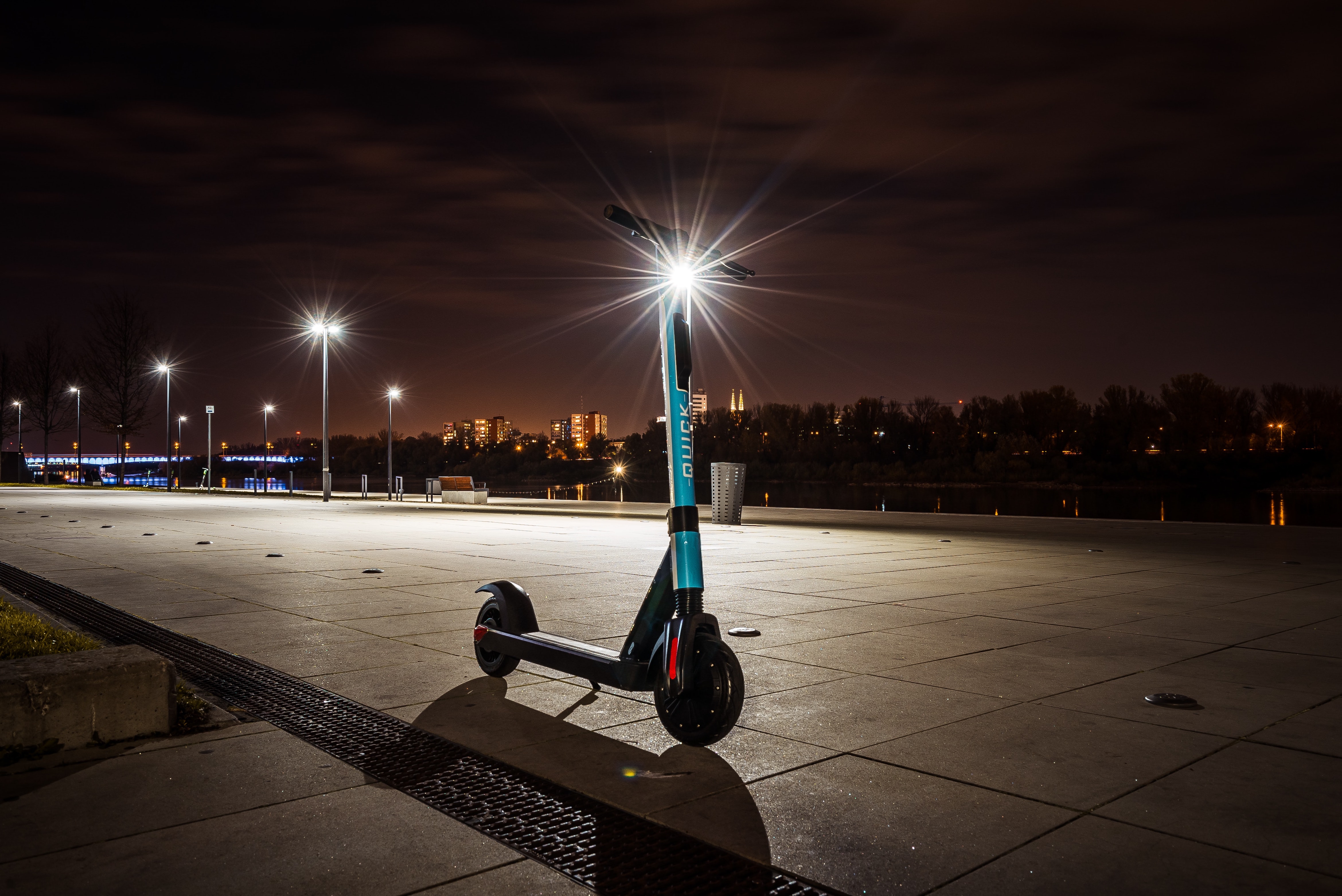Demand for curbs, sidewalks, and furniture zones (herein referred to as ‘curbspace’) continues to explode as macro trends such as online commerce, shared rides, and micro-mobility grows at an exponential pace.

However, the supply of curbspace is finite, which presents an ever-increasing conflict which manifests in a plethora of public agency concerns:Â increased gridlock, unpredictable traffic conditions, obstructions & tripping hazards on pedestrian right-of-way areas, dock-less bikes or scooters, as well as other private micro-mobility vehicles have no place to park. Transportation equity concerns have arisen as new transportation options often require smartphones for renting, booking and payment. As public transit ridership declines and people replace mass transit with shared mobility more complaints begin to surface to city managers regarding e-scooters and the effects of congestion caused by ride-hailing apps like Uber and Lyft.

One would agree that cities need to actively manage curbspace as these modern transportation solutions present a new set of problems – a growing/ever changing mix of private operators, curbspace is often managed by multiple public agencies and curbspace’s many stakeholders are constantly changing.
Curb Management requires expertise in multiple areas with a singular focus of efficiency and sharing the space. The curb management solution provider needs to work with local partners to ensure relevant stakeholders are considered, act as ‘property managers’ of the curb to set and enforce consistent ground rules, and establish partnerships to create an integrated and singular approach to mobility.
Mobility sub-category project impact: The proposed solution and the ideal deployment scenario.
 The proposed solution is to develop a network of curbside mobility hubs deployed at busy urban blocks with high demand for curbspace from operators of rideshare, packaged delivery, on-demand delivery, and micro-mobility. Ideal locations will also be near RTD-type bus stops and rail stations to encourage multi-modal travel.
New Technology Use Cases Are Here
This solution is taking modern mobility solutions and creating one cohesive solution providing end to end or last mile transport to anywhere within the system. This idea will take an existing rideshare and micro-mobility solutions and apply an overarching approach to delivering transportation value in a large city.
While curb management is a recognized matter in planning circles, active curbspace management via a property manager model is a new concept. Our solution takes ‘curb management’ from a planning exercise into a deployable operational framework that is scalable and deployable immediately. Other public agencies have piloted single components of curbside mobility hubs such as scooter charging docks, on-demand parking apps, and smart city IoT device communication, but not all in one. Our proposed solution will integrate all of these components into a single operational framework.

Replicability
The solution is replicable in any urban core where curbspace demand outpaces supply. If the proposed project is successful, it can be used to address these problem in cities across the US and globally.
Scalability
Curbside mobility hubs are very scalable because they can adapt to existing infrastructure. Each block face has existing physical attributes – bulb-outs, curbcuts, bike lanes, narrow/non-existing furniture zones, etc. – that are difficult to change. Because curbside mobility hubs are composed of many attributes that can be stacked upon each other or presented individually, each location can be designed based on existing environments with little to no modification. Visual designs can be presented based on different physical curbspace layouts.

Risks
As articulated earlier, curbspaces are managed by multiple public agencies, each with their own domain of expertise: parking, traffic management, department of energy, street maintenance, transit, public safety, etc. The greatest risk to a successful project is the amount of coordination required between multiple public agencies.
Our team and partners have over 15yrs of experience working with multiple public agencies. We are adept at generating organizational coordination, buy-in, and support from a broad set of stakeholders.
The Plan: Our solution implementation, major project phases and steps required

Proper planning and organizational buy-in is key to ensuring a successful outcome. Our plan is to split into three key phases with a clearly defined deliverable at the completion of each phase:
Phase 1 – Research (interviews, audits, research citywide/traffic plans, one-page document stating program goals and beliefs)
Phase 2 – Finalize program details (Finalize scope/region/strategy/budget/3-5 page document stating program details)
Phase 3 – Formalize program (draft term sheet, term sheet signed by relevant public agencies, secure financing for a zero-cost program, program agreement signed by all parties)
Phase 4 –
Develop Standard Operating Procedures – (SOPs for operations,/logistics/financing, legal/contracts/reports/meeting schedules/by-laws with 20-30 page document stating program goals, KPIs, reports, and governance)
Phase 5 – Program begins its roll out. If all parties have agreed to the solution, both public and private, a complete curbside IoT solution can be rolled out quickly customized to the needs and attributes of the area.

Running a Successful Pilot
Initial success for this pilot will be measured by starting and operating a pilot network of mobility hubs in a specified city. While the initial location count will be determined alongside the citizens and administrators. The results of this pilot network should provide positive impacts for all relevant stakeholders, as measured by the following metrics.
Measuring Metrics for Success
Project success must be based on pre-defined measurable results to ensure value is added. The following metrics are recommended for consideration and final metrics can be set by working with relevant public agencies and stakeholders:
- Pedestrian Safety (reduced complaints)
- Traffic Flow (reduced accidents/incidents, improved speed and flow of traffic)
- Revenue (the model should ideally be self-sustaining based on revenue from private agencies and city rentals)
- Transit Equity (total sign-ups and rides increase for low, mid and high income)
Resources Required
- Management Resources – (manage private industry stakeholders such as rideshare providers, delivery services, micro-mobility, IoT device, and network providers, etc. while also managing public agency stakeholders and community stakeholders)
- Customer Service Resources – (on-site support, maintenance and off-site customer service)
- Hardware Resources – (mobility hub kiosks, cameras, communication routers, and charging infrastructure)
- Software Resources – (custom programming, API integration, and communications support)
Requirement from public agencies for implementation of the solution
We require the following from the public agencies:
-Signed term sheet
-Defined points-of-contact with relevant public agency stakeholders
-Permissions to manage and monetize on-street parking spaces, furniture zones, and access to grid power
Experience and Partnerships
Our concept of curbspace property management is a novel one. However, Tranzito is the industry leader in mobility hub management, operations, and has direct experience with many aspects of this solution:
LA Mobility Hubs Pilot Program, City of Los Angeles – 1st of 97 locations to launch Spring 2020 featuring the first deployment of patent-pending mobility hub kiosks and first deployment of charging docks for privately owned micro-mobility.
Caltrain Mobility Hub, San Francisco – working with SPIN and Uber Jump to launch the first micro-mobility hub Spring 2020, featuring the first management of multiple micro-mobility operators. Will incorporate electric charging docks for shared scooters and shared bikes.
Bay Area Rapid Transit (BART) Bike Station, SF Bay Area – Exclusive operator since 2004; provides on-field operations, customer service, registration, emergency site visits, community outreach, construction management, reports for 13 locations and counting.


